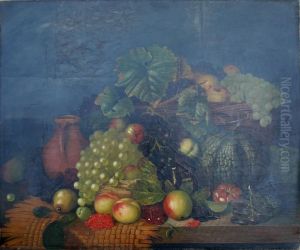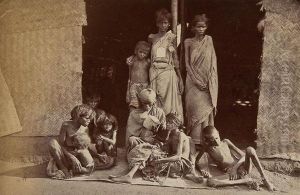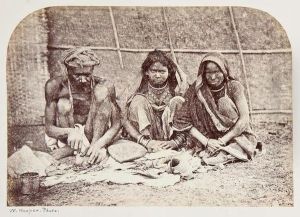Willoughby Wallace Hooper Paintings
Willoughby Wallace Hooper was a British photographer and officer of the British Army who became known for his photographic work during the latter half of the 19th century. Born on November 5, 1837, in Morpeth, Northumberland, Hooper joined the British Army and served in India, a region that would become the primary focus of his photographic career. His work coincided with the period when photography was becoming more accessible and popular, and he was among the early adopters of the medium in the military and colonial context.
Hooper served with the 7th Dragoon Guards and later transferred to the Bengal Staff Corps. His military career provided him with the opportunity to travel extensively across India. During his time in India, Hooper developed an interest in photography and he began to document the landscapes, people, and events that he encountered. This was a time of significant political and social change in India, including the aftermath of the Indian Rebellion of 1857, and Hooper's photographs offer valuable historical insight into this era.
Hooper's work is particularly noted for its ethnographic and topographic content. He captured a wide range of subjects, from architectural studies to portraits of the diverse ethnic and professional groups in India. One of his most significant contributions to photography was his collaboration with fellow photographer James Waterhouse on a series of photographs titled 'The People of India,' which was an extensive ethnographical study that aimed to categorize the various races and communities of India.
Aside from his ethnographic work, Hooper was also known for his coverage of the Second Anglo-Afghan War (1878-1880), where he took photographs of the British military campaigns. The images from this period provided a rare visual record of the war and had a significant impact on the public's perception of the conflict back in Britain.
Hooper retired from the army in 1880 and returned to England, where he continued his interest in photography. He passed away on May 22, 1912, in London. Although not as widely recognized today as some other contemporary photographers of his era, Hooper's photographs remain an important resource for historians and art historians alike. They provide a unique glimpse into the British colonial experience in India and contribute to our understanding of the historical uses of photography as a documentary medium.


